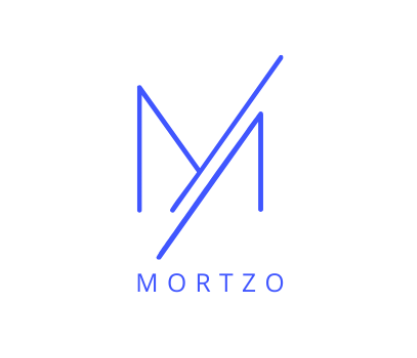Fixed Rate Mortgages vs. Adjustable-Rate Mortgages: Choosing the Right Mortgage for Your Needs.

When it comes to purchasing a home, one of the most critical decisions you’ll face is selecting the right mortgage type. With numerous options available, understanding the key differences between fixed-rate and adjustable-rate mortgages (ARMs) is essential to making an informed choice. This blog will break down the characteristics, advantages, and disadvantages of both types, helping you determine which mortgage is best suited to your financial situation and goals.

What is a Fixed Rate Mortgage?
A fixed-rate mortgage is a loan where the interest rate remains constant throughout the life of the loan. Typically available in 15, 20, or 30-year terms, fixed-rate mortgages offer predictable monthly payments that make budgeting easier. Because the rate is locked in, borrowers are protected from interest rate fluctuations over time.
Advantages of Fixed Rate Mortgages:
- Predictability: Your monthly principal and interest payments remain the same, allowing for better financial planning.
- Stability: Fixed-rate mortgages protect you from rising interest rates in the future. If market rates increase, you won’t be affected as your rate is locked in.
- Simplicity: The straightforward nature of fixed-rate mortgages makes them easy to understand and compare.
Disadvantages of Fixed Rate Mortgages:
- Higher Initial Rates: Fixed-rate mortgages often start with higher interest rates than ARMs, meaning your initial monthly payments may be higher.
- Less Flexibility: If interest rates decrease after you secure your loan, you won’t benefit from lower rates unless you refinance.
- Long-Term Commitment: Borrowers committing to a long-term fixed-rate mortgage may miss out on potential savings in a lower-rate environment.

What is an Adjustable-Rate Mortgage (ARM)?
An adjustable-rate mortgage is a loan with an interest rate that can fluctuate based on market conditions. ARMs typically start with a lower initial interest rate, which is fixed for a specific period (often 5, 7, or 10 years). After this initial period, the rate adjusts periodically, usually annually, based on a specific index plus a margin.
Advantages of Adjustable-Rate Mortgages:
- Lower Initial Rates: ARMs often offer lower interest rates at the beginning of the loan term, resulting in lower monthly payments for the first few years.
- Potential Savings: If interest rates remain stable or decrease, you could benefit from lower payments when your rate adjusts.
- Possibility of Lower Overall Costs: Borrowers who move or refinance before the first adjustment may pay less in interest over the life of the loan compared to a fixed-rate mortgage.
Disadvantages of Adjustable-Rate Mortgages:
- Rate Uncertainty: After the initial fixed period, your rate may increase, leading to higher monthly payments. This uncertainty can make budgeting more challenging.
- Potential for Payment Shock: When the interest rate adjusts, borrowers may experience significant increases in their monthly payments, which could strain their finances.
- Complexity: Understanding how ARMs work, including index rates and adjustment caps, can be complicated, making it harder to evaluate your options.
Choosing the Right Mortgage for Your Needs
When deciding between a fixed-rate mortgage and an adjustable-rate mortgage, consider the following factors:
- Time Horizon: How long do you plan to stay in your home? If you plan to move or refinance within a few years, an ARM might save you money due to its lower initial rate. However, if you plan to stay long-term, a fixed-rate mortgage could provide stability and predictability.
- Risk Tolerance: Are you comfortable with potential changes in your monthly payments? If you prefer the certainty of knowing exactly what your payments will be, a fixed-rate mortgage is likely a better fit. If you’re willing to take on some risk for the potential of lower payments, an ARM could be more suitable.
- Financial Situation: Evaluate your current financial situation, including your income, savings, and other expenses. If you have a tight budget, the lower initial payments of an ARM may be appealing. However, be cautious of future payment increases.
- Market Conditions: Stay informed about current and projected interest rates. If rates are low and are expected to rise, a fixed-rate mortgage may be advantageous. Conversely, if rates are high but expected to fall, an ARM could provide savings.
- Loan Features: Different ARMs come with various features, such as caps on rate increases, which can mitigate some risks. Review the terms and conditions of any mortgage option carefully.
Conclusion
Selecting the right mortgage is a significant decision that can impact your financial future. Understanding the differences between fixed-rate and adjustable-rate mortgages is crucial in finding the option that aligns with your financial goals, risk tolerance, and time horizon.
Fixed-rate mortgages offer stability and predictability, making them ideal for long-term homeowners who value certainty in their monthly payments. On the other hand, adjustable-rate mortgages provide initial savings and flexibility, appealing to those who plan to move or refinance within a few years.
Ultimately, the choice between a fixed-rate and adjustable-rate mortgage comes down to your unique situation. Take the time to assess your needs and consult with a mortgage professional to explore your options. By doing so, you’ll be better equipped to choose the right mortgage that meets your financial needs and paves the way for your homeownership journey.

